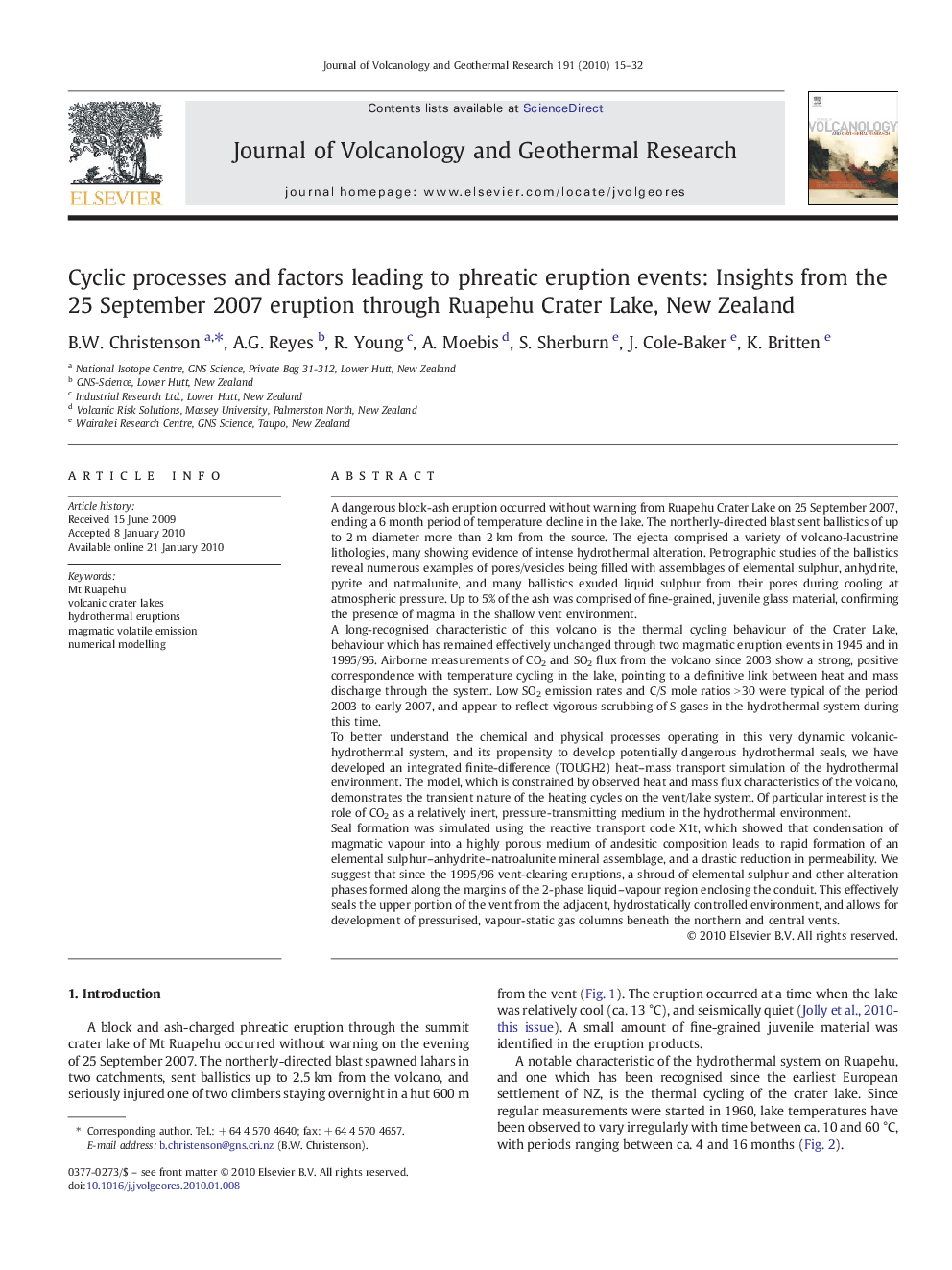| Article ID | Journal | Published Year | Pages | File Type |
|---|---|---|---|---|
| 4714126 | Journal of Volcanology and Geothermal Research | 2010 | 18 Pages |
A dangerous block-ash eruption occurred without warning from Ruapehu Crater Lake on 25 September 2007, ending a 6 month period of temperature decline in the lake. The northerly-directed blast sent ballistics of up to 2 m diameter more than 2 km from the source. The ejecta comprised a variety of volcano-lacustrine lithologies, many showing evidence of intense hydrothermal alteration. Petrographic studies of the ballistics reveal numerous examples of pores/vesicles being filled with assemblages of elemental sulphur, anhydrite, pyrite and natroalunite, and many ballistics exuded liquid sulphur from their pores during cooling at atmospheric pressure. Up to 5% of the ash was comprised of fine-grained, juvenile glass material, confirming the presence of magma in the shallow vent environment.A long-recognised characteristic of this volcano is the thermal cycling behaviour of the Crater Lake, behaviour which has remained effectively unchanged through two magmatic eruption events in 1945 and in 1995/96. Airborne measurements of CO2 and SO2 flux from the volcano since 2003 show a strong, positive correspondence with temperature cycling in the lake, pointing to a definitive link between heat and mass discharge through the system. Low SO2 emission rates and C/S mole ratios > 30 were typical of the period 2003 to early 2007, and appear to reflect vigorous scrubbing of S gases in the hydrothermal system during this time.To better understand the chemical and physical processes operating in this very dynamic volcanic-hydrothermal system, and its propensity to develop potentially dangerous hydrothermal seals, we have developed an integrated finite-difference (TOUGH2) heat–mass transport simulation of the hydrothermal environment. The model, which is constrained by observed heat and mass flux characteristics of the volcano, demonstrates the transient nature of the heating cycles on the vent/lake system. Of particular interest is the role of CO2 as a relatively inert, pressure-transmitting medium in the hydrothermal environment.Seal formation was simulated using the reactive transport code X1t, which showed that condensation of magmatic vapour into a highly porous medium of andesitic composition leads to rapid formation of an elemental sulphur–anhydrite–natroalunite mineral assemblage, and a drastic reduction in permeability. We suggest that since the 1995/96 vent-clearing eruptions, a shroud of elemental sulphur and other alteration phases formed along the margins of the 2-phase liquid–vapour region enclosing the conduit. This effectively seals the upper portion of the vent from the adjacent, hydrostatically controlled environment, and allows for development of pressurised, vapour-static gas columns beneath the northern and central vents.
